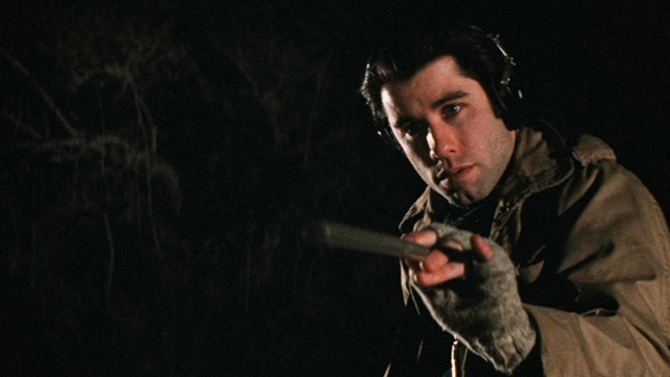Alfred Hitchcock is often considered to be one of the greatest directors of all-time and I would have to agree with that assessment. His genius at building a suspenseful story through the camera lens in films such as Vertigo, The Birds, Rear Window, North By Northwest, to name a few, place him at the top of the list. One active director who would wholeheartedly agree is Brian De Palma.
The oft-forgotten talent rose to fame at the same time as other big names like Martin Scorsese, Francis Ford Coppola, and Steven Spielberg. He has been called the Master of the Macabre as his thriller films included graphic depictions of edgy violence and nudity; something Hitchcock would have loved to be able to do, pushing the envelope in the realm of grit and sexuality in much the same way if he had not been shackled to the morality and censors of the time.
One movie that De Palma made that oozes Hitchcock-like style is the 1981 motion picture Blow Out. It begins with a movie within a movie. The opening scene uses a Steadicam, (a clever invention that mounts the camera on a person, isolating it from his or her movements thereby allowing for smooth shots even when moving quickly or over uneven ground), which represents the killer that stalks college students in a cheap B-grade horror flick. The Steadicam had previously been used in only a few movies before this, for example, The Shining. Despite the cheesy opening, the flow of the shot gives us an example of what De Palma does best – his camera magically capturing the characters viewpoint, yet at other times it seems to have a life of its own (notice the scene where the main character [Travolta] realizes his recordings have been erased).
Once we step outside the opening sequence, the viewer joins Jack Terry (John Travolta), who is the sound man on this slasher film. The director of the flick wants Terry to go out and capture some new sounds that have not been heard before. That night he heads out to a park to tape fresh audio, but while doing so he records the sound of a car crashing into the water. Inside is a dead politician who was about to run for President of the United States as well as a woman named Sally (Nancy Allen), who he manages to rescue and as the movie progresses, falls for. What he soon realizes is that he is at the center of a conspiracy.
The story (scribed by De Palma) is superbly written with subtly clever hints that connect the whole movie together (if you are paying close enough attention). Some of the best scenes follow Burke, played by John Lithgow, who creates a spiraling conspiracy out of a simple smear scheme and then ties up loose ends by stalking his prey and manipulating things into place. De Palma sometimes uses two lenses on the camera to focus on both Lithgow or what he is doing and the person he is following in the distance, (without the second lens the images in the distance would be blurry) adding a more tense atmosphere to the scenes. It must also be noted that this is a movie about making movies. It shows the beauty of how films were made and how sound was added before the digital age.
The acting in this picture is also strong. Travolta is superb as the man thrown into the middle of a chaotic conspiracy. Lithgow is deliciously creepy as a murdering sociopath while Dennis Franz makes the most of his onscreen time in a short yet memorable role.
In the end, Blow Out is a tremendous thriller with one of the more memorable and powerful endings in film history. Additionally, the final moments expose a twisted and gut-wrenching reveal; one that Hitchcock, who sometimes was not able to end his movies the way he wanted to due to censors, would be proud of.
Part of the Criterion Collection

